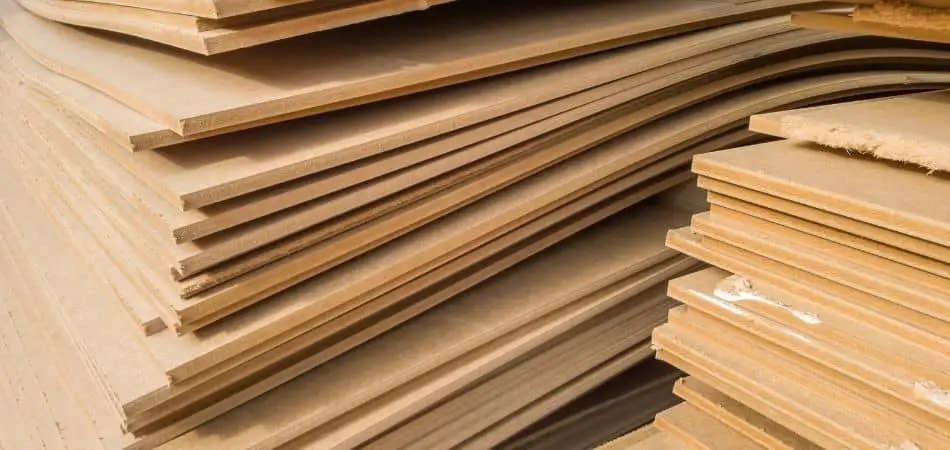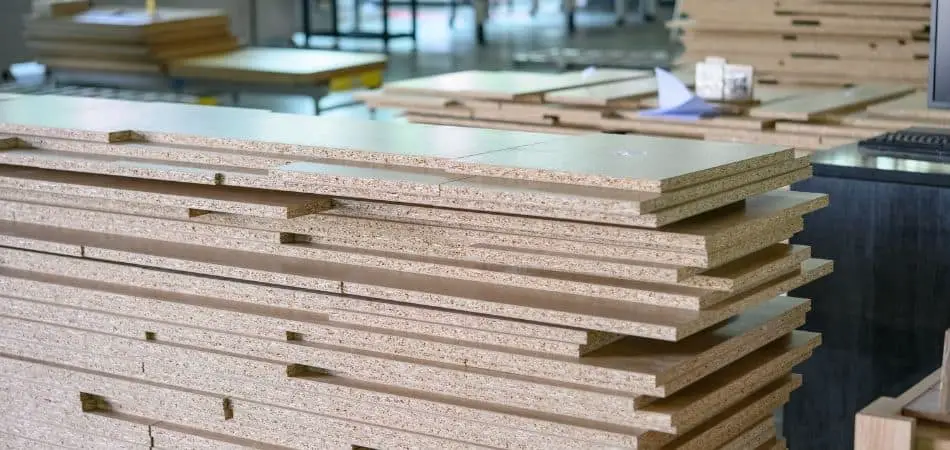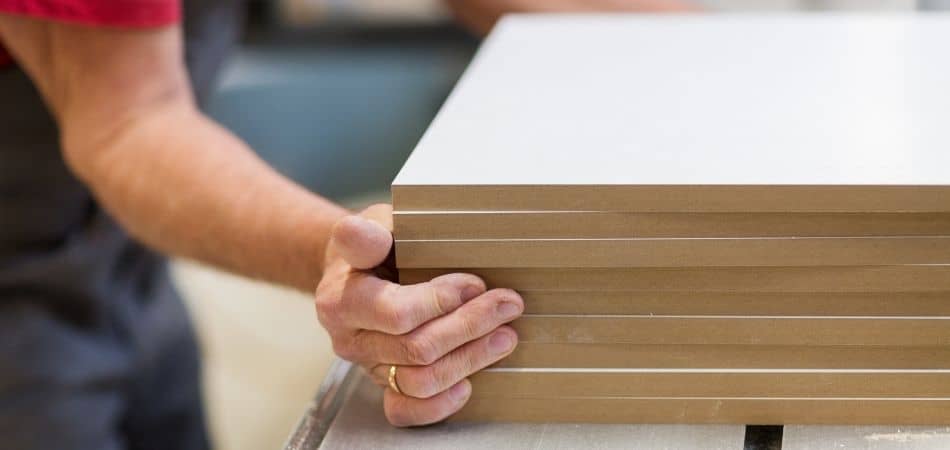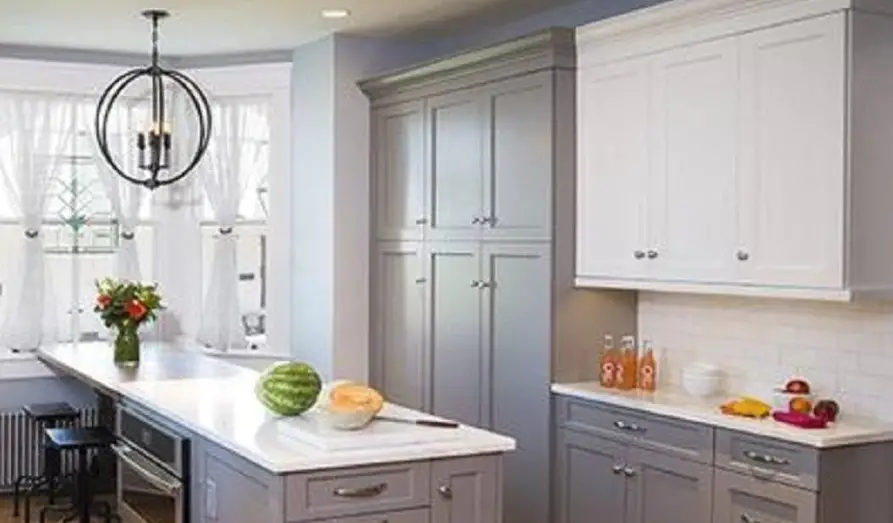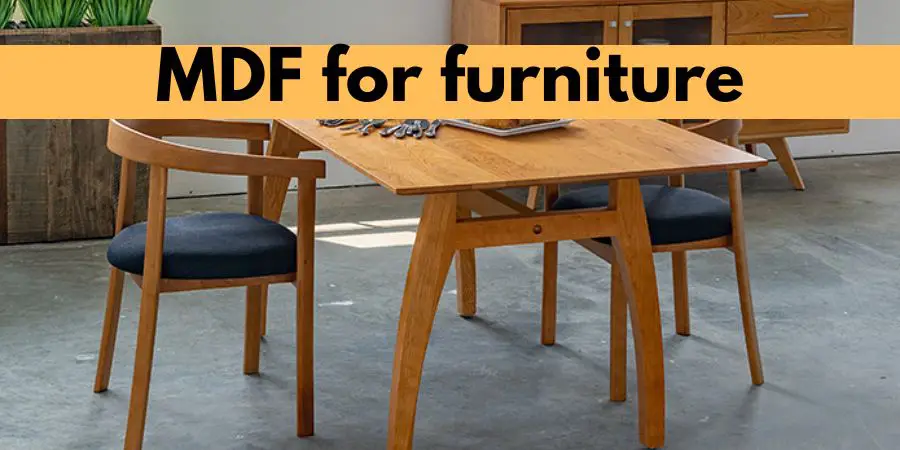First off, let’s define what MDF is. MDF is a type of engineered wood made by combining wood fibers with a resin binder and forming it into panels using high temperature and pressure. It’s commonly used in furniture, cabinetry, and shelving.
Table of Contents
Is MDF waterproof?
Unfortunately, the answer to this question is no, MDF is not waterproof. In fact, MDF is highly susceptible to water damage and will swell and deform when exposed to moisture.
Reasons: Why MDF is not waterproof?
High Porosity
One reason why MDF is not waterproof is its high porosity.
Because it’s made up of small wood fibers that are compressed together, MDF has a lot of tiny spaces between the fibers that can absorb moisture.
This makes it highly susceptible to water damage and can cause the MDF to swell and deform when exposed to moisture.
Lack of Natural Resins
Another reason why MDF is not waterproof is its lack of natural resins. Unlike natural wood, which contains resins that help protect it from water damage, MDF is made using synthetic resins.
These resins do not provide the same level of protection against moisture and can actually break down over time when exposed to water.
Edge Sealing is Not Effective
Lastly, another reason why MDF is not waterproof is that the edge sealing is not effective.
While coating the surface of MDF with a waterproof sealant or paint can provide some protection against water damage, the edges of the MDF are still vulnerable.
Because the edges are cut and exposed, they can absorb moisture more readily than the surface of the board.
Can MDF be made waterproof?
While MDF itself is not waterproof, there are ways to make it more water-resistant. One option is to coat it with a waterproof sealant or paint.
This can help protect the MDF from water damage to some extent, but it’s important to note that it won’t make the MDF completely waterproof.
Another option is to use a different type of engineered wood that is designed to be water-resistant, such as marine plywood or moisture-resistant particleboard.
These materials are specifically engineered to withstand exposure to water and moisture.
How to waterproof an MDF board.
Things you need:
- Sand grit paper.
- Paintbrush and Paint roller.
- Oil-based primer.
- Water-resistant paint.
Sand the surface:
Begin by sanding the surface of the MDF board with 220-grit sandpaper.
This will help to remove any rough spots or imperfections on the surface and provide a smooth base for the waterproofing material.
Apply a coat of primer:
Once the surface is smooth, apply a coat of primer specifically designed for MDF.
This will help the waterproofing material adhere better to the surface.
Apply a waterproof sealant:
There are several types of waterproof sealants available, including polyurethane, epoxy, and silicone.
Choose the one that is best suited for your application and apply it evenly over the surface of the MDF board using a brush or roller.
Allow to dry:
Depending on the type of sealant used, it may take several hours or even a full day for the surface to dry completely.
Be sure to follow the manufacturer’s instructions for drying time.
Sand again:
Once the first coat of sealant is dry, sand the surface again lightly with 220-grit sandpaper.
This will help to smooth out any rough spots and provide a better surface for the next coat of sealant.
Apply a second coat:
Apply a second coat of sealant to the surface of the MDF board, following the same process as the first coat.
Apply a topcoat (optional):
If desired, apply a topcoat over the waterproof sealant to provide additional protection and durability. Polyurethane or acrylic topcoats work well for this purpose.
By following these steps, you can effectively waterproof an MDF board and protect it from damage due to moisture.

